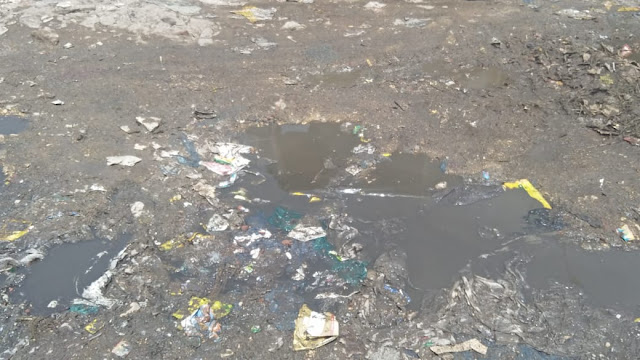Waqar Memon Journey to Mohen jo Daro
This is
travelogue. will check later. ... Roll No MC/153 Feature>
WAQAR
MEMON
2K17/MC/153
BS- III
2K17/MC/153
BS- III
Journey
to Mohen jo Daro
Old bricked
walls, old sculptures some old architecture that was my first visit to MohenjoDaro.
I am not tourist kind of person but this journey turned me into heritage lover.
When I reached at MohenjoDaro, it wasn’t like what I imagined, indeed, books
were right, it was a city itself with well-planned system.
MohenjoDaro
represents the existence of Indus civilization 5000 years before today. This site
were discovered in 1922. Some researchers say that MohenjoDaro existed from
2500 BC to 1900 BC.
Journey to MohenjoDaro
begun from Larkana. Those were cold days, Yousif and Rehman insisted me to come
along with them. Rehman drove us to Cadet College Larkana, we picked Ali from
there, who was our guide. MohenjoDaro starts from a huge gate written MOHENJO
DARO in calligraphy. While entering from
the gate, I witnessed a statue representing the dancing girl of that time. This
wasn’t the original statue which were discovered, it was the dummy of that statue,
while the original statue is in India. The figure of statuewas totally naked
all she wearing was the jewelry. Somehow this statue was contrasting with the
Mesopotamia civilization.
There was
also a Dhaba near the Entrance gate where we had tea. After tea break we moved
to the Museum near to that Dhaba. There were tourist guide as well, who were
busy in guiding tourist around and providing the information.
According to those guides, 1200 seals were discovered while digging the MohenjoDaro, most of those were having the animal shapes like Buffalos and Rhinos.Many other statues were discovered from MohenjoDaro as well, from those 5 were seem to be of same person. Except human, there were also miniatures of animals. The big statue was of the Priest King that captured everyone’s sight, which is mostly used as symbol of MohenjoDaro,that statue relates to the priests of Buddha, wearing anAjrak printed shawl.
According to those guides, 1200 seals were discovered while digging the MohenjoDaro, most of those were having the animal shapes like Buffalos and Rhinos.Many other statues were discovered from MohenjoDaro as well, from those 5 were seem to be of same person. Except human, there were also miniatures of animals. The big statue was of the Priest King that captured everyone’s sight, which is mostly used as symbol of MohenjoDaro,that statue relates to the priests of Buddha, wearing anAjrak printed shawl.
“MohenjoDaro
was one of the modern cities of that time in 2500 BC.” Ali Taqui, Lecturer at
Department of Archeology and Anthropology, University of Sindh, told.
Beside the
statue of Priest King there was old bricked road having instruction boards
beside it which lead us to actual MohenjoDaro city. While entering the city,
one can witness the city planning of that time even their drainage system were
better than ours. I guess they never witnessed those open gutters neither they
would have smelled the shit, that we usually smell and witness in our modern cities.
Everything
we witnessed there were purely made of mud. Their toys, dolls, statues, seals,
roads, stairs even houses and furniture inside were also made of mud.
From the
center of MohenjoDaro, where the main house is situated, it was the place where
King were used to stay and rest we can call it Haram, one can have the sight of
whole city. The walls were showing the structure of whole city, structure of
rooms and houses.
From the
Haram, my sight caught a hole on surface it seemed to be a swimming pool. “It
is the great bath.” Ali said. To reach there, we crossed the main streets,
which were used to be main Market Street of the city. Structure of The Great
Bath were contrasting to our modern Swimming pools, the only difference was
that, that pool was made of bricks and our pools are made of expensive tiles
and marbles.
Talking from
the cultural aspects, MohenjoDaro is as important as the Sumer and Egypt.
According to some researchers MohenjoDaro city lived for 700 years.
After
exploring the city, I would say that the ancestors of Indus civilization were
highly advanced in their social, cultural, economic and religious conditions, and
it was being reflected from their town planning.
Sun was
almost dawn, lights were fading out and we also had to travel back to
Hyderabad, due to that we couldn’t explore all of it but still, whatever I saw
there, “Chief House” Assembly Hall, Covered Drains, Wells, Skeleton Rooms,
Statues of King Priests, Dancing Girl and more, indeed this turned me into
history lover. While walking through those main streets, I felt the way they
lived, the families, the lifestyle, indeed they were well civilized than our
current modern civilization. We should learn from their lifestyles, this is what history is for to learn from it and that’s
how our trip ended which actually never ended, I still have that view in my
mind…


Comments
Post a Comment